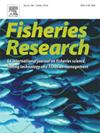中国渔业人口的社会经济地位与职业流动:基于社会调查数据的定量分析
IF 2.3
2区 农林科学
Q2 FISHERIES
引用次数: 0
摘要
中国渔业产量居全球首位,2022 年总产量将超过 6700 万吨。超过 1600 万人直接或间接从事渔业并以此为生。更好地了解这一庞大群体的特征,有助于更好地理解中国渔业的人文内涵。在本研究中,我们分析了 1989 年至 2015 年的纵向社会调查数据,得出了代表中国渔业人口社会经济地位的几个关键指标。我们发现:第一,渔业人口规模在缩小。其次,渔业人口的平均年龄在增长,但增速低于总人口。第三,渔业人口的教育水平在提高,但仍低于城市居民。第四,渔业人口的收入大幅增长,但增长速度低于农村人口和城镇人口。第五,渔业人口的就业呈现出高度的活力,在渔业部门和其他部门之间的职业流动率很高。本文章由计算机程序翻译,如有差异,请以英文原文为准。
Socio-economic status and occupational mobility of China’s Fishery Population: A quantitative analysis based on social-survey data
China ranks as the first fishery nation globally in terms of its fishery production, with a total production of more than 67 million metric tons in 2022. More than 16 million people work in and earn their livelihoods from fisheries, directly or indirectly. A better understanding of the characteristics of this large group of people could lead to an improved appreciation of the human dimensions of China’s fisheries. In this study, we analyze longitudinal social-survey data from 1989 to 2015 to derive several key indicators representing the socio-economic status of China’s fishery population. We find that, first, the size of the fishery population is shrinking. Second, the average age of the fishery population is increasing but at a slower rate than in the total population. Third, the education levels of the fishery population are rising but remain below those of urban residents. Fourth, the incomes of the fishery population have grown considerably, albeit more slowly than those of the general rural population and the urban population. Fifth, the employment of the fishery population is exhibiting a high degree of dynamism, with high rates of occupational mobility between the fishing sector and other sectors.
求助全文
通过发布文献求助,成功后即可免费获取论文全文。
去求助
来源期刊

Fisheries Research
农林科学-渔业
CiteScore
4.50
自引率
16.70%
发文量
294
审稿时长
15 weeks
期刊介绍:
This journal provides an international forum for the publication of papers in the areas of fisheries science, fishing technology, fisheries management and relevant socio-economics. The scope covers fisheries in salt, brackish and freshwater systems, and all aspects of associated ecology, environmental aspects of fisheries, and economics. Both theoretical and practical papers are acceptable, including laboratory and field experimental studies relevant to fisheries. Papers on the conservation of exploitable living resources are welcome. Review and Viewpoint articles are also published. As the specified areas inevitably impinge on and interrelate with each other, the approach of the journal is multidisciplinary, and authors are encouraged to emphasise the relevance of their own work to that of other disciplines. The journal is intended for fisheries scientists, biological oceanographers, gear technologists, economists, managers, administrators, policy makers and legislators.
 求助内容:
求助内容: 应助结果提醒方式:
应助结果提醒方式:


